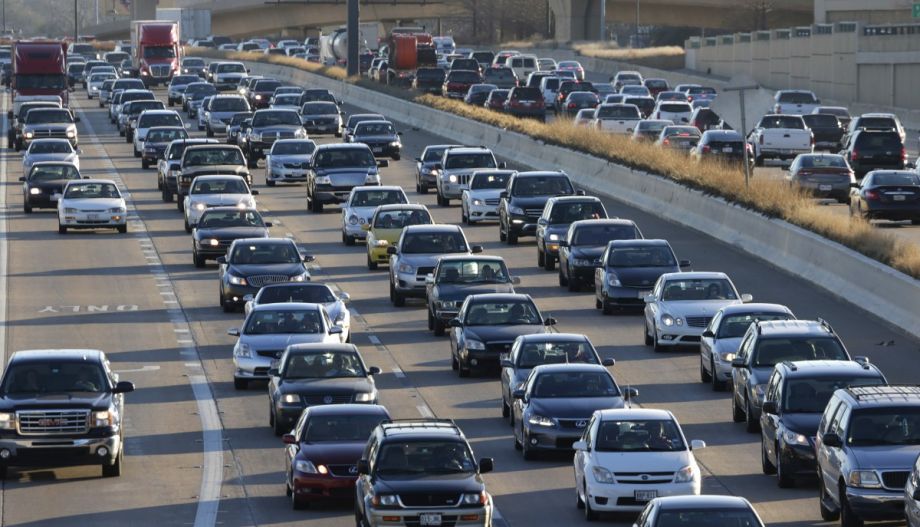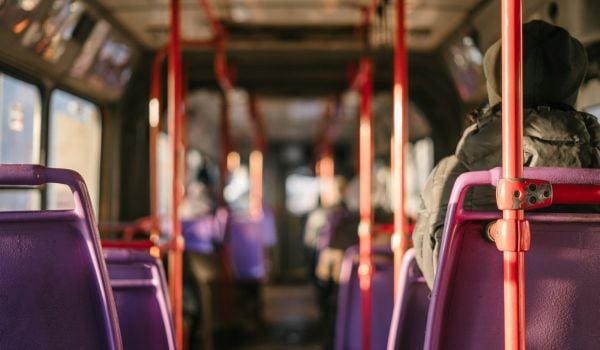Two physicists are sitting in a car. One says to the other, “Traffic is sure chaotic.” The other says, “Not so sure, buddy.”
This isn’t the start of a joke — it’s the origin story of a series of studies by a team of Colombian and Chilean researchers that prove once and for all, with a mathematical model, that traffic is indeed chaotic, in the dynamic sense.
And it all started with an argument in a car.
Chaos theory is a field of math that studies dynamical systems. “Dynamical” means that even though outcomes do depend on initial conditions, small differences in initial conditions change outcomes drastically without the interference of random external elements. Chaotic dynamical systems are by definition unpredictable. Edward Lorenz, a pioneer of chaos theory, described chaos as, “when the present determines the future, but the approximate present does not approximately determine the future.”
Jorge Villalobos, dean of the School of Mathematics and Sciences at the University of Ibagué in Colombia, explains the chaotic nature of traffic like this: “Suppose you have a neighbor and you work at the same place. If traffic was not chaotic, it would be possible for both of you to leave within 10 minutes of each other and arrive at work at basically the same time every day without fail. But we know that’s not true. Say you leave at 7 a.m. every day and usually arrive around 7:45. It’s perfectly possible that leaving at 7:05 could cause you to arrive at 8:30.” The chaos of traffic means that small differences in your departure times get amplified hugely.
This may seem obvious. Of course, you can beat rush hour by five minutes or get stuck in it. But this research proves that even without unpredictable levels of traffic or accidents or road construction, travel times would still be impossible to nail down because the nature of traffic itself is chaotic. Factoring in how much other traffic is on the road would count as the interference of random external elements. So, to find out if traffic was chaotic, Villalobos and his team created a model in which a single car interacts with only traffic lights. They found that likelihood of chaos increases when a driver attempts to synchronize his trip with the lights to hit all the greens.
This means, as Villalobos says, “If you try to set up the system to minimize your travel time, you’re going too near the necessary conditions for chaos to appear.” The mechanism that creates chaos is the braking and accelerating of a car attempting to minimize travel time by hitting every green light just as it turns green. “If you barely miss it,” explains Villalobos, “you have to brake at the light but not stop, and then accelerate — that’s why you have chaos.” This does not mean trying to minimize your travel time will actually make your trip longer. It could still make it shorter. It just means that you become more susceptible to small differences in your trip resulting in huge differences in your travel time. You become less able to give a reliable ETA.
Think of a pinball machine for an analogy. The machine never changes but no two games are ever the same. You can extract the physics. You can write equations for the motions of the ball (or the car). But the tiniest variation in the way a ball hits a bumper produces a large difference in its trajectory. It’s not a perfect metaphor because a human operating the flippers on a pinball machine counts as an external interference, but the bumpers are a way to understand why traffic lights and the slight acceleration-brake combinations they cause create chaos.
Villalobos, who had been working with Juan Alejandro Valdivia on the car chaos models for a few years, was sitting on a bus one day in Bogotá and realized that the buses, because they add stops into the equation, would make an interesting extension to his research. So he and his team created a model in which a bus travels through a sequence of traffic lights and stops between lights to pick up passengers. They manipulated for how long the bus stopped. Their findings were published in a recent paper in the journal Chaos. They found that buses are likewise susceptible to chaos if their routes are engineered to minimize travel times: synchronized with traffic lights, making stops as short as possible and accelerating as much as possible after stops.
Another of their conclusions could prove useful to transportation planners. Planning a bus route so that the bus stops for longer and consistent amounts of time can significantly increase the predictability of the bus’s position along its route. Sure, this could make it slower, but it’s easy to see the benefits of a slightly longer but more predictable commute.
Villalobos and his team are now trying to find out how driver behavior affects the system. They have created a mathematical model for an aggressive driver — one always trying to go at the top speed of the bus — and a calm driver. Depending on their findings, it’s possible to imagine a general policy recommendation to all transit authorities: “Bus drivers need to chill out,” and it also wouldn’t be a joke.
The Science of Cities column is made possible with the support of the John D. and Catherine T. MacArthur Foundation.

Zoe Mendelson is a journalist in Mexico City campaigning for a more chiller world. Her work has been featured on Fast Company, Buzzfeed, Untapped Cities and elsewhere.
Follow Zoe .(JavaScript must be enabled to view this email address)




_600_350_80_s_c1.jpg)



_on_a_Sunday_600_350_80_s_c1.jpeg)








